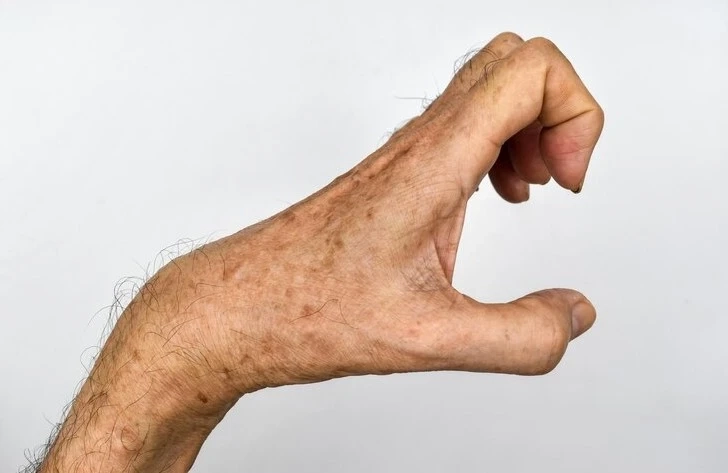Dupuytren's contracture is a progressive hand condition that causes the fingers to bend inward, limiting their range of motion. Traditionally, surgical intervention has been the primary approach for managing Dupuytren's contracture. However, advancements in medical research and technology have paved the way for innovative non-surgical treatments that offer promising results. In this guest post, we will explore the non-surgical treatment for Dupuytren's contracture, highlighting their effectiveness, benefits, and the potential they hold for patients seeking an alternative to surgery.
Collagenase Injection
Collagenase injection, also known as Xiaflex, is a breakthrough non-surgical treatment for Dupuytren's contracture. It involves injecting an enzyme called collagenase into the affected hand, which works by breaking down the excess collagen responsible for the contraction. Once injected, collagenase weakens the cords of collagen, allowing the hand to gradually regain its natural mobility.
One of the significant advantages of collagenase injection is its minimally invasive nature. The procedure can be performed in an outpatient setting, eliminating the need for hospitalization. Patients often experience less pain and discomfort compared to surgical options. Moreover, the recovery period is typically shorter, enabling individuals to resume their regular activities sooner.
Collagenase injection has demonstrated remarkable success rates, with studies reporting significant improvements in finger extension after treatment. This non-surgical approach offers an excellent alternative for individuals who are reluctant to undergo surgery or are considered poor candidates for surgical intervention due to various factors.
Needle Aponeurotomy
Needle aponeurotomy, also known as percutaneous needle fasciotomy or needle fasciotomy, is another effective non-surgical treatment for Dupuytren's contracture. This technique involves using a small needle to puncture and divide the tight bands of tissue (cords) that cause finger contracture. The procedure is performed under local anesthesia on an outpatient basis.
Needle aponeurotomy offers several benefits, including its less invasive nature and reduced risk of complications compared to surgery. The procedure allows for targeted treatment of affected areas while preserving healthy tissue. Patients generally experience less post-operative pain and enjoy a quicker recovery period, with some being able to use their hands almost immediately after the procedure.
Although needle aponeurotomy can provide significant relief and restore hand function, it may not be suitable for all cases of Dupuytren's contracture. The decision to undergo this treatment should be made in consultation with a hand specialist who can assess the severity of the condition and determine the most appropriate course of action.
Radiation Therapy
Radiation therapy is the non-surgical treatment for Dupuytren's contracture, particularly in cases where surgery is contraindicated or the disease has recurred after previous interventions. Low-dose radiation is applied directly to the affected hand, targeting the nodules and cords responsible for the contracture.
Research studies have shown that radiation therapy can effectively slow down the progression of Dupuytren's contracture and alleviate symptoms. It works by inhibiting the excessive production of collagen and reducing the fibrotic changes in the hand. The procedure is typically administered in multiple sessions over a few weeks, and patients can usually resume their daily activities without significant downtime.
Radiation therapy offers a non-invasive option for patients seeking alternatives to surgery or those with multiple affected fingers. However, it's important to note that the long-term effects and potential risks associated with radiation exposure require further investigation. As with any treatment, consultation with a healthcare professional is crucial to determine its suitability for individual cases.
Conclusion
Non-surgical treatments have revolutionized the management of Dupuytren's contracture, offering patients effective alternatives to surgery. Collagenase injection, needle aponeurotomy, and radiation therapy provide viable options with reduced invasiveness, shorter recovery periods, and promising outcomes.
While non-surgical treatments have shown great potential, it's essential to consult with a hand specialist who can evaluate each patient's unique condition and recommend the most appropriate approach. By staying abreast of the latest developments in non-surgical interventions for Dupuytren's contracture, patients can make informed decisions and explore treatment options that best suit their needs, ultimately improving hand function and quality of life.
Frequently Asked Questions (FAQ)
Q1: What is Dupuytren's contracture?
A1: Dupuytren's contracture is a hand condition characterized by the thickening and tightening of the connective tissue (fascia) beneath the skin of the palm and fingers. It leads to the progressive bending of one or more fingers, limiting their ability to straighten fully.
Q2: Why should I consider non-surgical treatment for Dupuytren's contracture?
A2: Non-surgical treatments offer a less invasive approach compared to traditional surgery. They can be suitable for individuals who are not candidates for surgery due to various factors or those who prefer non-invasive options. Non-surgical treatments often have shorter recovery times and reduced risk of complications.
Q3: What are the non-surgical treatment options available for Dupuytren's contracture?
A3: Some non-surgical treatment options for Dupuytren's contracture include collagenase injection (Xiaflex), needle aponeurotomy (percutaneous needle fasciotomy), and radiation therapy. These treatments aim to break down or loosen the contracted tissue and improve hand function.
Q4: How does collagenase injection work?
A4: Collagenase injection involves the use of an enzyme called collagenase that is injected into the affected hand. Collagenase works by breaking down the excess collagen responsible for the finger contracture. This allows the hand to gradually regain its natural mobility.
Q5: What is needle aponeurotomy?
A5: Needle aponeurotomy, also known as percutaneous needle fasciotomy, is a non-surgical technique in which a small needle is used to puncture and divide the tight bands of tissue (cords) causing finger contracture. This procedure is performed under local anesthesia and is typically done on an outpatient basis.


